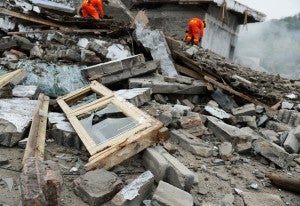The aftershocks of earthquakes can go on for months and even years in the ground. But how long do the aftershocks go on in human lives? Disruptions in living conditions and income seem likely to have major impacts on individuals and families over time, particularly in developing countries, but until recently little work has been done to test that intuition against hard data.
A devastating case study, though, has been provided by Peru’s 1970 Ancash earthquake, which registered 7.9 on the Richter scale and affected approximately 3 million people. With an epicenter 22 miles offshore in the Pacific Ocean, the tremor caused an estimated 66,000 deaths and US$ 530 million in property damage, mainly in coastal areas. Roads and other infrastructure were destroyed, and some rural areas remained isolated for months.
The disaster did not end after the quake subsided. In fact, it continues to this day. Analysis of data from Peru’s 1993 and 2007 National Censuses leads to a sobering conclusion: not only did infants under two years of age or in utero at the time of the disaster experience significant impacts, but also the next generation. Compared to persons living inland, those affected by the Ancash earthquake completed less formal schooling, started working earlier, and became parents at a younger age. Affected persons were also more likely to become single parents, live in low-quality housing and be poor in assets. In all of those areas women suffered worse impacts than men.
How these outcomes arose is not entirely clear, but several possibilities deserve particular consideration. Mental and physical development is widely known to be diminished by illness and malnutrition at critical ages, and both were made more likely by the destruction of homes and livelihoods. Disrupted emotional and social development may play a part as well, since earthquakes can lead to post-traumatic stress disorder (PTSD) in children as well as adults, and persons with untreated PTSD are likely to experience difficulties in school, work and home life. Depending on how children are raised, those troubles can ripple across generations.
Disasters of the magnitude of the Ancash earthquake can go beyond the devastation of individual lives to affect the development path of an entire nation. Policy responses are needed. In particular, governments should put in place measures to alleviate the impact of natural disaster on children two years of age or under, including children in utero, with a particular emphasis on girls.
The short-term costs of such action may be considerable, but the long-term costs of inaction are far greater. In a middle-income country such as Peru, losing half a year of formal education—the average for a male affected by the Ancash earthquake—means reducing adult wages by 3.9 to 5.5 percent. While natural disasters are inevitable and recurring, such a loss of opportunities and human potential is neither.
This post is based on “Quake’n and Shake’n…Forever! Long-Run Effects of Natural Disasters: A Case Study on the 1970 Ancash Earthquake” by Sebastián Miller and Germán Caruso


Leave a Reply